Did you know the average racehorse’s career is usually no more than 3 years? In 2018, over 20,000 North American thoroughbred foals were registered with the Jockey Club as potential racehorses. Many of those horses will never become successful racehorses and those that do will be retired soon after their careers begin.
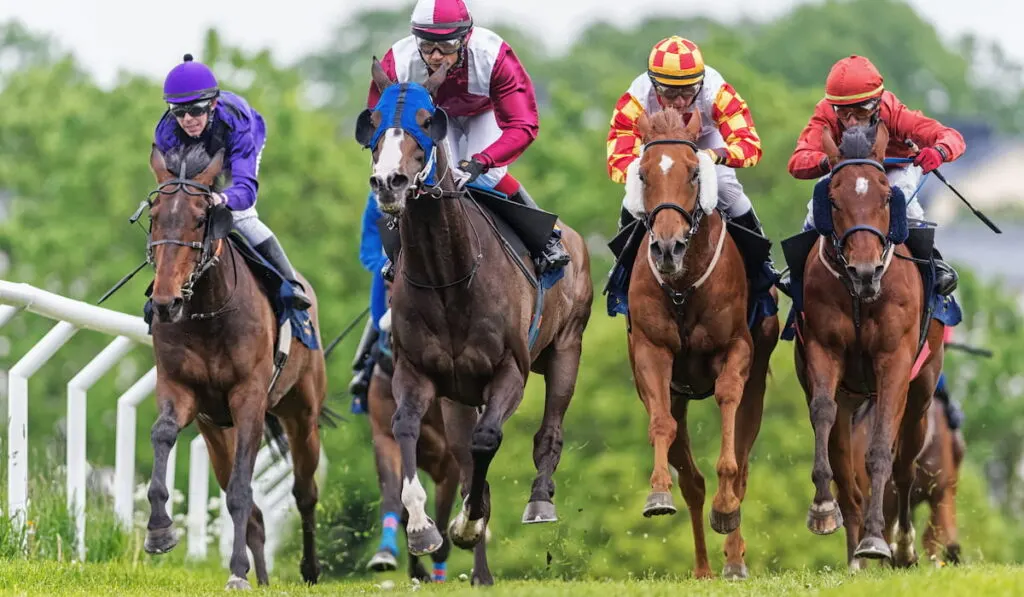
A racehorse’s career is often short-lived and after retirement, their lives can go in different directions depending on their success. Retired racehorses either become sires for future generations, have new careers, have their lives ended by euthanasia or they will end up in slaughter auctions.
Life after retirement for racehorses is not all sunshine and rainbows, nor is it completely bleak. While some will suffer a dire fate, many retired racehorses will go on to have fulfilling lives. Knowing the truth about horseracing retirement will help you formulate your own ideas and opinions on the sport and the foundations that exist to help these amazing animals.
Table of Contents
Reasons for Retirement
There are many different reasons for a racehorse to enter retirement. All fertile racehorses, regardless of their rate of success, will be retired at a young age. Sure, horses can still run and win a race without a jockey even, but that doesn’t mean they can keep running forever. Age at retirement is not an indicator of their success.
A Proven Winner
Unaltered racehorses that win enough races will be retired quickly, usually before 3 years of age. This helps to avoid injury and allows the owners to begin collecting their money for breeding fees.
Male horses that have been altered, geldings, are usually allowed to race longer because they cannot sire offspring. A racehorse stallion that is successful is said to be more valuable to their owners after retirement than while they are racing.
Owners can pocket an astounding $150,000 for each offspring of a successful racehorse. High-ranking stallions can breed up to 200 mares in one year. (source)
Failure to Succeed
Horses that do not perform as expected will be retired early from the racing world, if they ever make it to a track at all. If a horses continues to not place in their racing competitions and are not improving, they are retired quickly to keep their owners from losing more money training them.
Many potential racehorses never even make it onto the racetrack. Although they may have the proper breeding, some horses just are not racehorses. These horses will be retired very early on. (source)
Fatal or Debilitating Injury
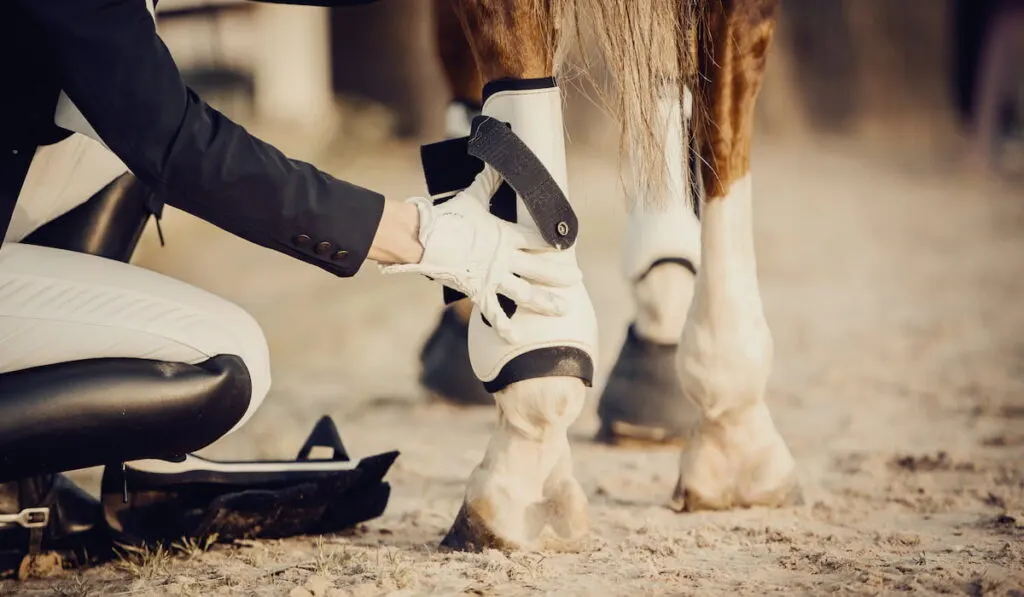
Racing is a sport and there is always a risk of injury with any sport, especially at the speeds that racehorses compete. From the annual EID (Equine Injury Database) statistics, the compiling of reported fatal racehorse injuries in official Thoroughbred events, the average rate of fatal injury in 2017 was 1.46 in 1000 race starts.
Possible fatal injuries include limb fractures, joint fractures, and laminitis. Debilitating injuries that will more than likely lead straight to retirement include severe inflammation from strained tendons, lameness, chronic knee problems, joint effusion, joint fluid accumulation, and ligament issues.
What Age Do Racehorses Retire?
Usually, racehorses are retired before they reach the age of 3, whether they are successful or not. The average lifespan of Thoroughbred horse is between 25 and 28 years old.
This means most racehorses retire from racing soon into the first quarter of their lives. (source) Geldings do tend to race longer than fertile horses, since they hold no value for breeding.
Life After Retirement
Racehorses can end up on various paths following retirement. While some options are bleak, not all paths after retirement lead to death. Many Thoroughbred former racehorses go on to live full happy and healthy lives.
Breeding Shed
Successful racehorses that are retired are most often sent to the breeding shed. This is an area on stallion farms that are made specifically for the breeding of brood mares to successful stallion thoroughbreds.
It is a safe environment to prevent injury and ensure that breeding has occurred. Broodmares are brought to the stallion’s farm for breeding.
For new broodmares who have never been bred, a teaser horse is brought in to gauge her response. This is a preventative measure to keep her and the stallion safe.
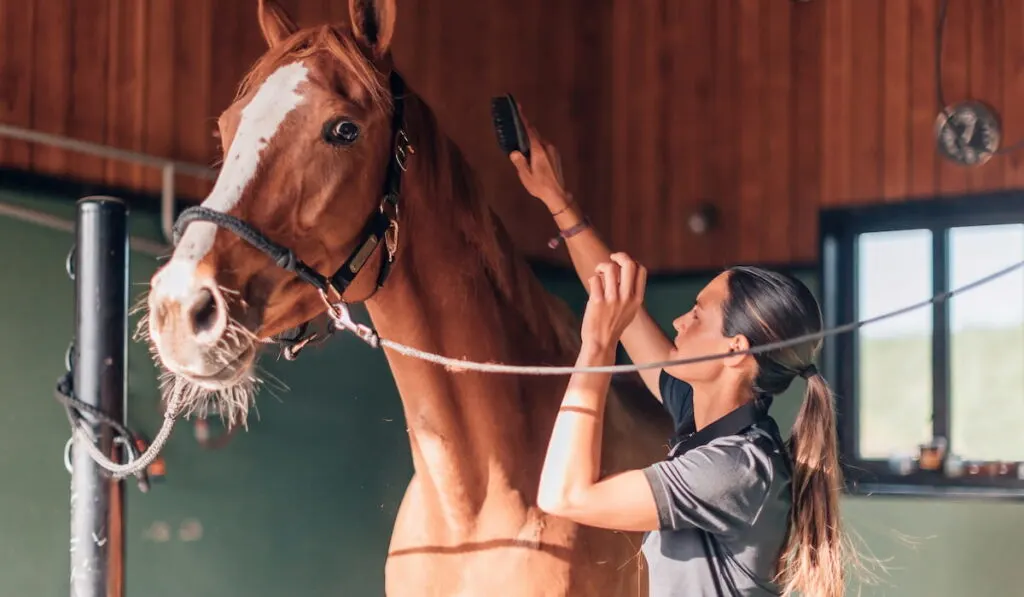
In order to be registered in the Jockey Club, a requirement for horse racing, horses cannot be created through artificial insemination or embryo transfer. This rule keeps these breeding stallions well cared for throughout their lives.
Hill ‘n’ Dale Farms is home to Curlin, a gorgeous Thoroughbred stallion that retired with over $10.5 million in winning, the all-time money winner in North America at the time.
His stud fee is an impressive $175,000.
He is very well-cared for and will be throughout his life as a sire. Granted, stallion farms are not all created equal and life in a breeding shed multiple times a month may not be ideal for some stallions, but it is far better than ending up at slaughter auctions.
2nd Careers
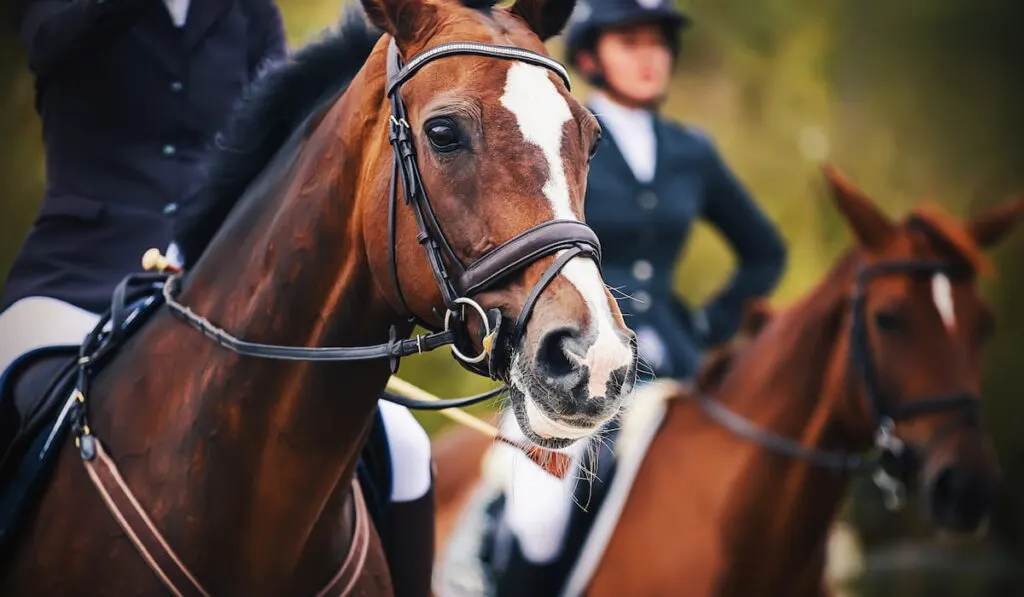
Many racehorses, successful and unsuccessful, retire from racing and move on to a second career. These careers can be other sports or they may simply become great horses for avid equestrians.
Jumping, dressage, foxhunting, barrel racing, ranch work and trail riding are just some of the many disciplines racehorses may enter after retirement from racing.
According to a study by the Retired Racehorse Training Project, 75% of retired racehorses sold to new owners are used for horseback riding and 11% are retired to the pasture to live out their days in rest.
Most of these horses are sold to the public directly by the owners, 13.5% are rehomed by non-profit organizations, and 9% are sold by trainers who help retrain them for their new lives.
Euthanasia
Racehorses that suffer debilitating or catastrophic injuries while racing or training often end up being humanely euthanized.
Many equestrians and even non-equestrians have heard of Barbaro, the 2006 Kentucky Derby winner who sustained a broken leg during a race. While the break was repairable, the laminitis he developed during that time led to him being euthanized.
Many people may view this has inhumane, but laminitis is an extremely painful, debilitating hoof disease and is 4th on the list of top causes of death in horses.
Laminitis often develops in one leg while horses are recovering from injuries in other legs. Limb fractures are responsible for 87% of fatal injuries in racehorses.
Sometimes, accidents on the racetrack are unavoidable while others are due to over racing. Most limb fractures in horses are not repairable due to their weight and need to stand. Most owners will opt for humane euthanasia over putting the animal through additional pain. (source)
Slaughter Auctions
The sad truth is that there are just an overabundance of thoroughbred foals brought into the world each year for their racing potential. Once they are no longer making money, their value diminishes rapidly and there are just not enough homes available for them.
Many of these horses that are unsuccessful will end up at slaughter auctions. While there are a number of organizations fighting daily to stop this, it is inevitable.
Thankfully, many racetracks have no-slaughter policies that prevent owners from sending them to these auctions. It is reported that although former racehorses do end up at these auctions, that the percentage is no higher than that of horses in the regular population.
Programs and Projects for Retired Racehorses
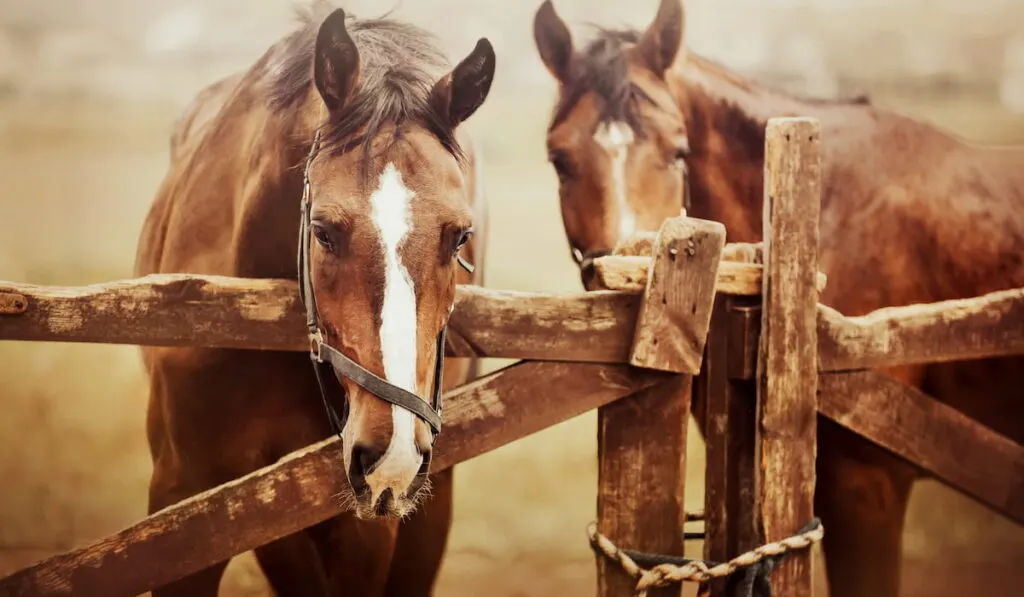
Luckily, there are a lot of organizations that exist to help retired racehorses find loving and safe homes. Their goal is to prevent them from ended up at slaughter house.
Retired Racehorse Project (RRTP)
Established in 2010, the RRTP was created to help guide the rehoming of retired Thoroughbred racehorses to their second careers. They accomplish this goal by promoting their cause and increasing the demand and value given to retired racehorses. They strive to keep the public informed and connect them to owners who are looking to transition these horses to their next careers.
Canter USA
This is a volunteer-managed organization that rehabilitates, retrains and helps to rehome retired racehorses. The offer free advertisement for owners looking to rehome their former racehorses. The group do not make any money off these sales. Their intent is to help connect horse riders looking for former racehorses with owners looking to sell them. Horses that are rehabilitated in their Rehab. Retrain. Rehome. program are donated to the organization by the owners and rehomed privately.
Hidden Acres Rescue for Thoroughbreds (Hart)
This organization dedicates itself on the rescue, rehabilitation and rehoming of retired racehorses. New homes are vetted, and the horses are evaluated thoroughly to ensure that they are matched with a rider that can handle them. They want the new homes for these horses to be permanent. HART also offers lessons to new owners so they can have an exceptional relationship with their horses.
Final Thoughts
Horse racing is a popular and lucrative sport for racehorse owners. The problem exists in the short-lived career span of an average racehorse along with the high number of potential racehorses born each year. Thousands of racehorses will be retired each year and typically only the successful ones will be kept for breeding. There are simply not enough homes for all of these misplaced former racehorses, but thankfully there are a lot of organizations working to rehome them and allow them to live fulfilling lives.
Resources
https://www.therrp.org/soundness/883-common-injuries-in-retiring-racehorses-2

